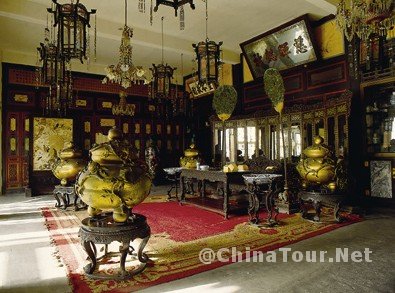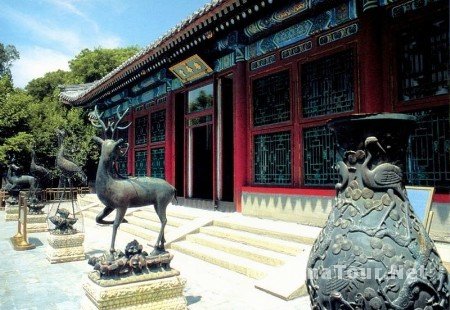The Hall of Joyful Longevity originally had two floors and was built for Emperor Qianlong’s mother in the 15th year of Emperor Qianlong’s reign (1750). Burned down by the Anglo-French Allied Forces in the 10th year of Emperor Xianfeng’s reign (1860), it was reconstructed in the 12th year of Emperor Guangxu’s reign (1886) to serve as the living quarters for Empress Dowager Cixi during her stay in the Summer Palace.

Structurally, the Hall of Joyful Longevity is a typical Siheyuan (Chinese quadrangles) compound with a courtyard in the center. There are small yards on two sides of the main house with side houses in east and west wings. A decorated pathway is located between the main gate and the courtyard as the secondary entrance. It also has the Back Hall behind the main hall. The bronze deer, bronze crane and bronze vase placed in front of the main hall symbolize peace; and the magnolia, begonia and peony plants growing in the yard represent prosperity. In front of the Hall of Joyful Longevity is a stone wharf with decorated railings. It was where Cixi disembarked or embarked at Summer Palace by water. Two huge carved stone pillar were used to hang lamps.
Suprisingly, you will see a big strange stone in the garden. There is a story about it. A Ming official named Mi Wanzhong had a mania for stones. He spent all his money taking this rock to his house but didn’t make it. The rock was abandoned by the roadside. Emperor Qianlong once saw it and liked it. Then, it was taken to the Summer Palace.